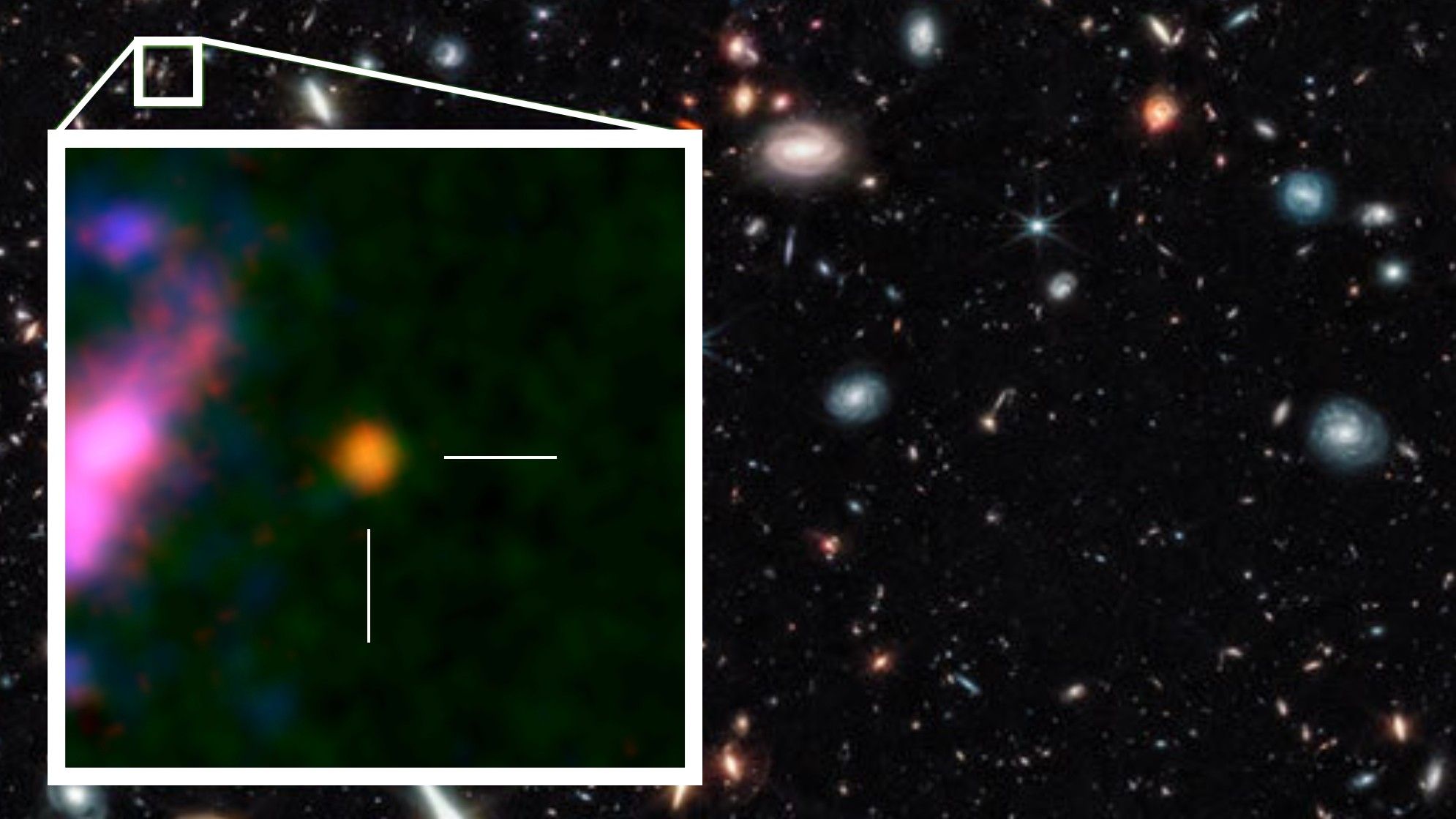Astronomers using the James Webb Space Telescope (JWST) may have discovered the most distant supermassive black hole ever seen. The enormous object, hosted by the galaxy GHZ2, is so far away that astronomers see it as it was just 350 million years after the Big Bang.
The team’s research, uploaded to the preprint server arXiv Nov. 4 but not yet peer-reviewed, used observations from JWST’s Near Infrared Spectrograph and Mid-Infrared Instrument. These instruments cover a wide range of wavelengths and can detect ultraviolet and optical light originally emitted by the distant galaxy, which has been stretched into the infrared due to the expansion of the universe.
Secrets of the lines
Since GHZ2’s discovery was reported in 2022, astronomers have used JWST to find many distant galaxies. However, GHZ2 stands out because its spectrum shows very intense “emission lines” — bright bands of light emitted by certain atoms or ions when their electrons get energized and then release energy at specific wavelengths. These lines carry clues about the processes powering GHZ2.
“We are observing emission lines that require a lot of energy to be produced, known as high-ionization lines,” Jorge Zavala, an assistant professor in the Department of Astronomy at the University of Massachusetts Amherst and co-author of the study, told Live Science in an email.

Zavala explained that the current understanding of gas ionization — heating of gas that turns atoms into ions by losing or gaining electrons — is based primarily on nearby star-forming regions and usually doesn’t account for the intense high-ionization lines. These lines, and the relationship between them, are often found in active galactic nuclei (AGN), which contain actively feeding black holes at their centers, with much more energetic radiation present.
A crucial clue was the detection of the C IV λ1548 emission line, which comes from triply ionized carbon — that is, carbon atoms that have lost three electrons. “Removing three electrons requires an extremely intense radiation field, which is very difficult to achieve with stars alone,” Chavez Ortiz said. An AGN naturally produces such high-energy photons. The strength of this line strongly suggested that GHZ2 might host an actively feeding black hole, which motivated the researchers to do an in-depth analysis.
A mixed system
Because GHZ2 is an unusual system that challenges existing models, the researchers had to develop detailed models to match its unique behavior and understand the contributions of both stars and the AGN to the galaxy’s light. This process involved testing and improving the models repeatedly to ensure they accurately represented the galaxy’s properties.
Their analysis revealed that while the visible-light spectral lines could be explained by star formation alone, the particularly strong carbon line required the presence of an AGN. This finding suggested that some of the galaxy’s light shows contributions from a hungry supermassive black hole.
However, Zavala noted that GHZ2 lacked some other indicators of an AGN. This means the galaxy may be powered mostly by stars — if those stars were supermassive, with masses hundreds to thousands of times that of the sun, or if star formation in GHZ2 happened very differently from what we currently understand.
Another possibility is that the galaxy’s light comes partly from normal stars and partly from more exotic sources, like supermassive stars or an AGN.
To further confirm the AGN activity, researchers plan to obtain more JWST observations to collect higher-resolution spectra of some emission lines. Additionally, observations from the Atacama Large Millimeter/submillimeter Array that cover spectral lines in the far-infrared could improve the sensitivity of the dataset.
If confirmed, GHZ2 would host the most distant supermassive black hole ever identified. Detecting signs of AGN activity in this galaxy offers a rare natural laboratory to test competing “light seed” and “heavy seed” models of black hole formation and growth just a few hundred million years after the Big Bang.

